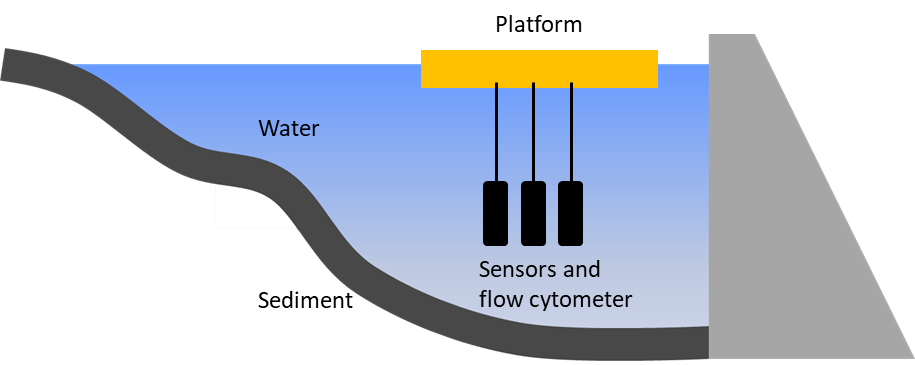EventNut -
Rapid, event-driven shortcuts between benthic nutrients and phytoplankton in inland and coastal waters

Deutsche Forschungsgemeinschaft (DFG)
Grant no: 456675148
Funding period: 1.2.2021 - 31.3.2024
Project partners:
Dr. Tallent Dadi (UFZ, Department Lake Research)
Prof. Dr. Hendrik Schubert (Univ. Rostock)
University of RostockInstitute for Biosciences
Department Aquatic Ecology
Albert-Einstein-Straße 3
18059 Rostock
ph. +49 381 6070
E-Mail: hendrik.schubert@uni-rostock.de
in cooperation and supported by:
PD Dr. Rhena Schumann
Biologische Station Zingst
Mühlenstraße 27
18374 Ostseeheilbad Zingst
Tel. ++49 38232 891026
Fax: 038232 8910 22
Email: rhena.schumann(at)uni-rostock.de
Dr. Jan Köhler and Dr. Michael Hupfer
Leibniz-Institute of Freshwater Ecology and Inland Fisheries (IGB) in the Forschungsverbund Berlin e.V.
Müggelseedamm 310
D-12587 Berlin
Algal blooms remain a major challenge in many lakes and coastal waters because they continue to persist even where external nutrient loads have been reduced. The vast amounts of “legacy” nutrients in the sediments continue to provide nutrients pulses, which trigger algal blooms. The relevant time scales of these nutrient pulses and the resulting immediate response of algae have not yet been identified since in-situ measurements at high temporal resolution were hindered by methodological constraints.
This is a major knowledge gap because evidence for pulsed, i.e. event driven, regimes is well present in the literature, e.g. by sudden shifts in redox conditions due to anoxia. Moreover, benthic nutrient release is expected to increase as a result of global warming due to longer stratification periods and increasing risk of anoxia. The effects of such internal nutrient pulses on algal growth can be expected to be strong since algal growth during summer is usually limited by nutrients (N, P, Fe). By using a new generation of sensors, in-situ wet chemistry analyzers, and flow cytometry it is now possible to measure benthic nutrient pulses and algal dynamics at high temporal resolution.
The objective of this project is to measure, analyse and conceptualise the short time scale effects of benthic nutrient dynamics on algal dynamics (including species composition changes) and physiology (respecting for species-specific responses) under in-situ conditions. This will be conducted in a shallow freshwater and a brackish water system, using combination of high temporal resolution wet chemical sensors (P), UV spectral sensors (C, N) and methods for characterisation of phytoplankton photophysiology status (in-situ flow cytometry, gas exchange measurements and various kinds of pulse-amplitude-modulated fluorometers).
This project pioneers to identify the frequency and magnitude of nutrient pulses in parallel to their immediate effects on phytoplankton, causal analysis for interpretation of the observed effects will be done by lab- and mesocosms-size incubation experiments installed in parallel to the field measurements. This will provide new insights into the driving processes and immediate effects of internal loading, which is the major driver of eutrophication in many water bodies.
Our investigations will provide ground-breaking in-situ data that, to our knowledge, have not been measured before at such fine time-scales and are certainly also of interest to other researchers, in particular to water quality managers. We, therefore, strive for providing our original data also on open access data repositories.
